Sony Bravia 9 vs Samsung QN95D: which Mini LED TV is best?
Battle of the Mini LED TVs
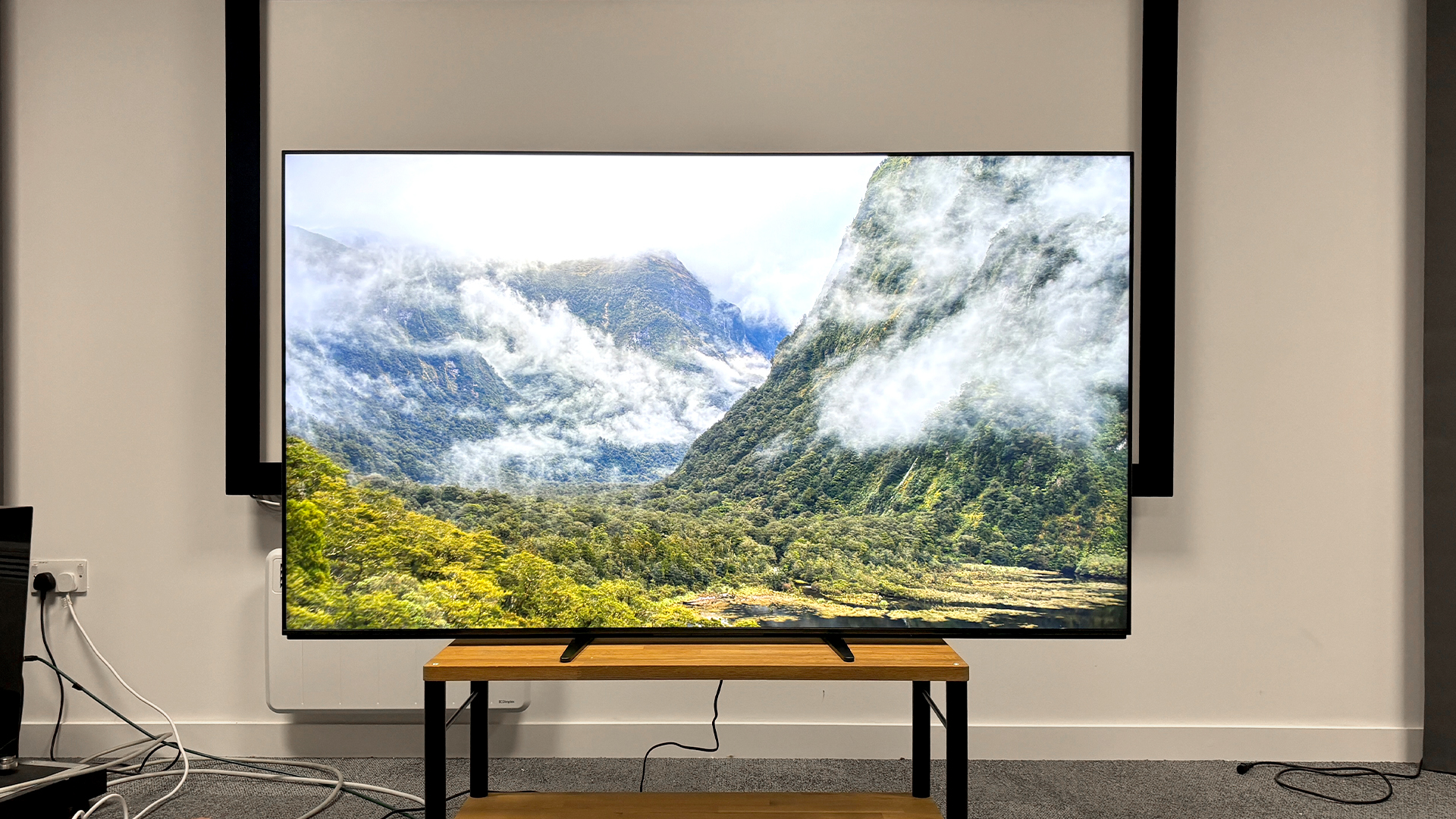
Screen size: 75in (also available in 85in, 65in in the US)
HDR formats: HLG, HDR10, Dolby Vision HDR
Operating system: Google TV
HDMI inputs: x 4 (48Gbps HDMI 2.1 x 2, HDMI 2.0 x 2)
Dimensions (hwd, without stand): 96 x 167 x 4.8cm
The Bravia 9 certainly isn't cheap, and is less likely to be discounted than the Samsung. It's a chunky beast too, and its feature set isn't quite as impressive (only two HDMI 2.1 sockets, for example). But in terms of picture and sound quality, it's the one to beat.
Pros
- Dazzling brightness and highlights
- Impressive height effects from built-in speakers
- Excellent local dimming on dark backgrounds
Cons
- Buggy and compromised picture on some content
- Sound could be weightier
- User interface can be sluggish at times
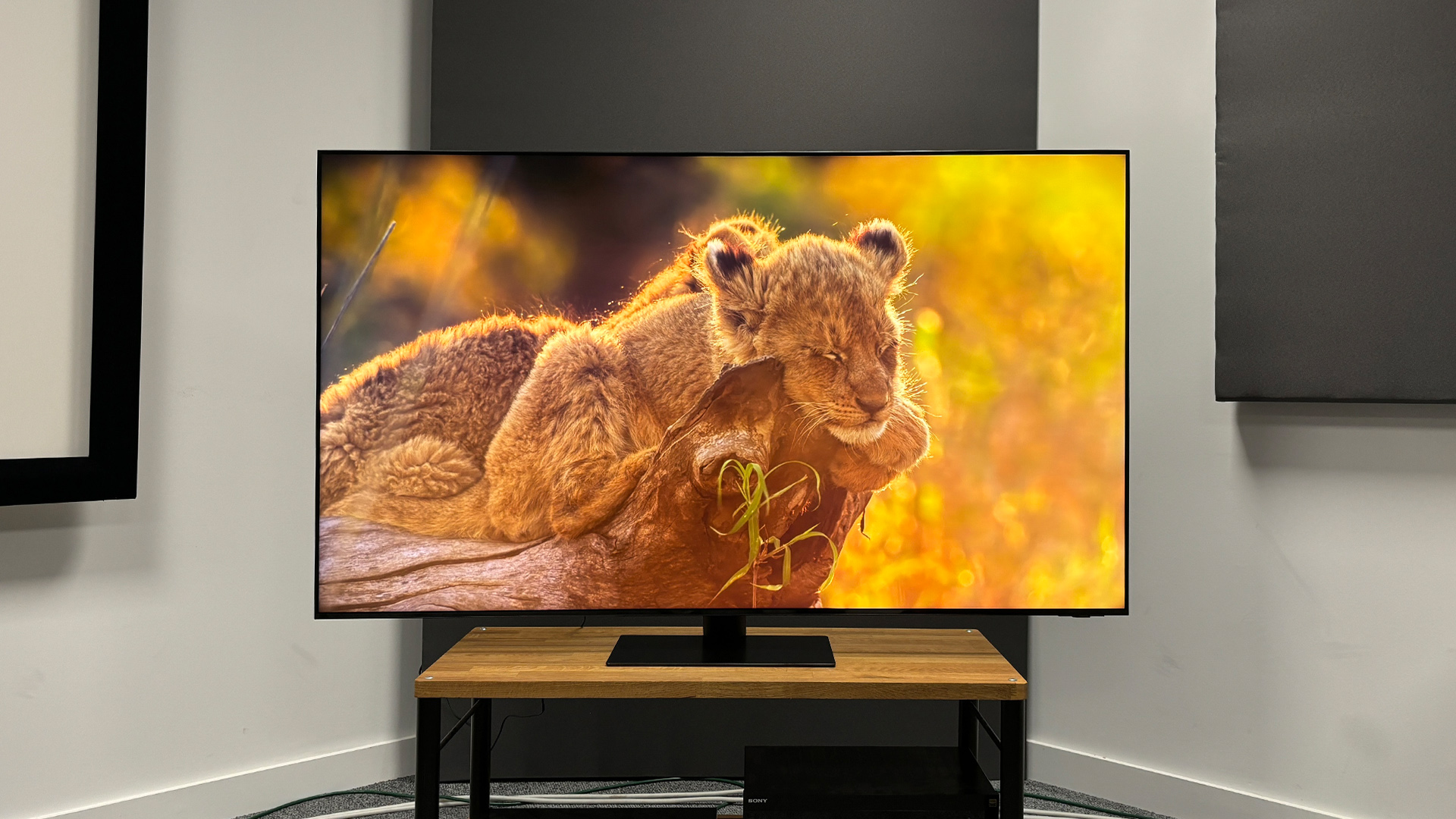
Screen size: 65in (also available in 75in, 85in)
HDR formats: HLG, HDR10, HDR10+
Operating system: Tizen
HDMI inputs: x 4 (48Gbps HDMI 2.1)
Dimensions (hwd, without stand): 83 x 145 x 2cm
The Samsung QN95D does a lot right. It's a beauty to look at, it's more affordable than the Sony and comes in more practical sizes. It's better-specced for gamers, too. But some annoying picture niggles (such as backlight blooming) and sub-par sound mean it's second best in terms of performance.
Pros
- Sharp and clear picture quality
- Handles dark details well
- Excellent gaming specs
Cons
- Strange blue halo effect at times with some dark content
- Poor bass control
- Expensive for a Mini LED TV – though admittedly less so than the Sony
Mini LED is the TV tech on everyone's lips at the moment, especially since Sony chose it over OLED for its flagship 2024 model, the Bravia 9. But Sony isn't the only firm backing the backlit technology – Samsung has been prioritising Mini LED for years now, and it has a new flagship 4K model for 2024, the QN95D.
These firms are two of the major players in the TV market, so we have high hopes for both sets. Wondering which is worth your hard-earned? You've come to the right place...
- I've tested two 2024 flagship 4K Mini LED TVs – are they worthy OLED rivals?
Sony Bravia 9 vs Samsung QN95D: price
The Bravia 9 is a bit of an oddity, in that Sony only sells it in 75- and 85-inch variants in the UK and Australia. The 65-inch version is exclusive to the US, where it costs $3300. That's bizarre given that US homes are overwhelmingly larger than British ones, but then again, Sony is undoubtedly targeting the high end of the market. The 75-incher is £4499 / $4000 / AU$6995 and the 85-incher £4999 / $5500 / AU$7995.
The Samsung QN95D isn't available at all in the US or Australia. It's not exactly cheap in the UK either – but it is significantly more affordable than the Sony Bravia 9. The 65-inch QN95D is currently on sale from Samsung for £2799 (around $3600 / AU$5500), while the 55-incher is £2099. Not to be outdone, it also comes in 75- and 85-inch sizes, for £3899 and £5999 respectively (though some specs, such as the number of dimming zones, vary at different screen sizes).
Generally speaking, Samsung's TVs are also discounted more often – and by larger amounts – than Sony's, so keep a look out come sales time.
We've only tested the 75-inch Bravia 9 and 65-inch QN95D. We do expect both TVs to scale up and down in size fairly consistently, but our evaluations are based on those specific sizes.
** Winner: Samsung QN95D **
The latest hi-fi, home cinema and tech news, reviews, buying advice and deals, direct to your inbox.
Sony Bravia 9 vs Samsung QN95D: design
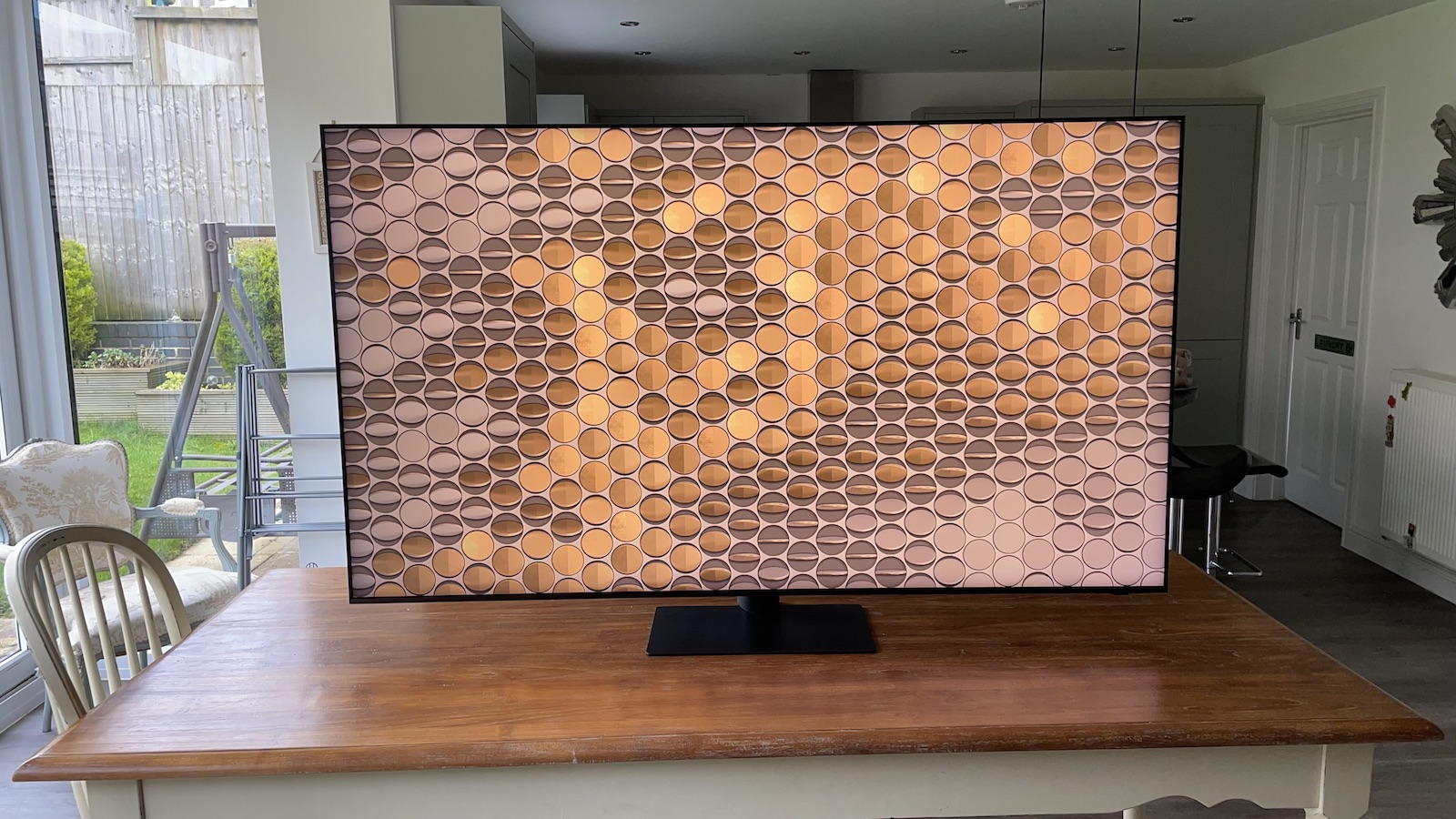
At nearly 5cm thick, the Sony Bravia 9 is more than twice as bulky as the Samsung QN95D. It bears plenty of the hallmarks of the best Sony TVs, including a crosshatched pattern across the back with Sony’s recycled SORPLAS material making up 65 per cent of the TV’s body. It also has the same feet that can be positioned either narrow or wide depending on the width of your TV cabinet, and higher than standard to accommodate a soundbar.
This SORPLAS material also features in the new Eco Remote, which comes bundled with the regular one. Features include a speckled green effect to hint towards its eco-friendliness, USB-C charging, a built-in speaker for the find my remote function and a mic for barking orders at Google Assistant.
The Samsung QN95D looks practically identical to the QN95C it's replacing. The 'Infinity One' design means very slim bezels and a central stand that doesn't swivel. This stand does, however, make it very easy to fit the TV on pretty much any surface.
Around the back is a selection of grooves that work as cable tidies, and the stand's detachable back plate can be removed to route cables through. All this is necessary as there's no One Connect box, as there is on the Samsung S95D.
Like the Sony, the QN95D also comes with two remotes: one standard and one slimmed-down, Solar Cell Remote. Again, the latter is a more environmentally-friendly version (though you can't help but feel the actual green option would be to only produce one remote), this time with a solar-powered battery that can be topped up via USB-C if needed.
** Winner: Samsung QN95D **
Sony Bravia 9 vs Samsung QN95D: features
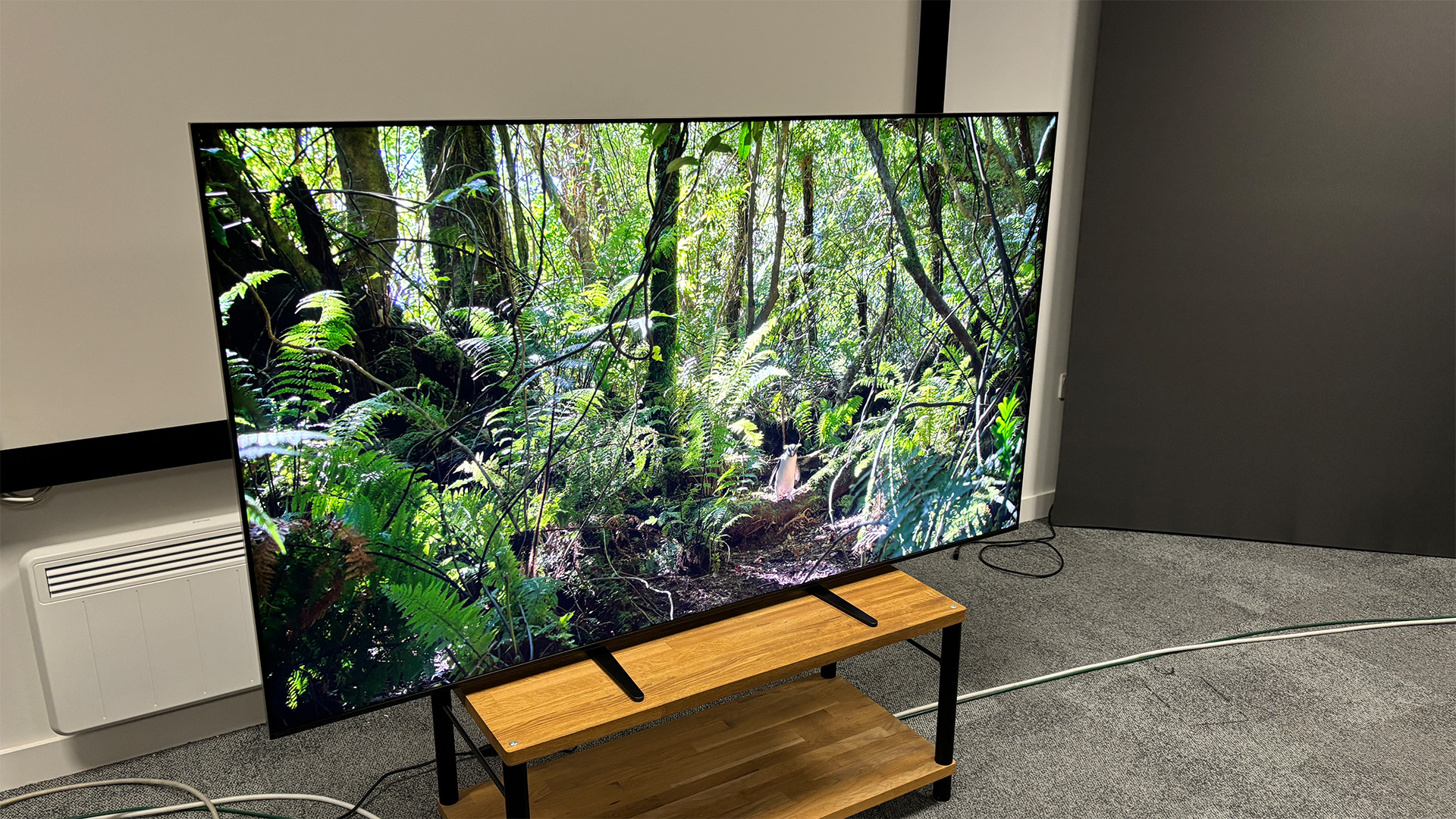
Because both TVs are Mini LED models, they both have backlights consisting of tiny LEDs that shine light through a colour layer (consisting of Quantum Dots in both of these cases). These Mini LED backlights allow these TVs to go much brighter than even the brightest current OLED models.
Backlit TVs can't control each individual pixel in the way that an OLED can, so instead they break the screen up into local dimming zones – the more of these they have, the greater precision they can exert over the picture. Sony hasn't revealed the exact number of dimming zones, though we estimate around 1920 – that's more than the Samsung QN95D's 1344, but remember the Samsung TV that we have tested has a smaller screen.
Sony claims the Bravia 9's backlighting is 30 per cent more power efficient than that of the X95L it replaces, which should save you some money on your energy bills. Sony's Eco Dashboard lets you track your energy usage, though its many – laudable – green features will limit the TV's brightness, which kind of misses the point of buying a Mini LED TV in the first place. You can turn these off if you prefer.
Google TV comes as standard, which is better in some ways than the Samsung QN95D's Tizen, but the Bravia 9 feels rather sluggish at times as you plough through menus. That's despite being powered by Sony's super powerful Bravia XR Processor. Odd. Hopefully this can be fixed via a firmware update.
The Bravia 9 features an Amazon Prime Video Calibrated mode, which will optimise your TV's picture using cloud data. It only works for supported Prime Video content, but it does as advertised, adjusting the colours and lighting during our testing. The Bravia 9 has similar modes for Sony Pictures Core (formerly Bravia Core) and Netflix, but these aren't new.
Like other Sony TVs, the Bravia 9 supports the HDR10, Dolby Vision and HLG formats of HDR. There's no HDR10+, which is surprising given that Prime Video is practically the only streaming service to support HDR10+ – we would think it would be the central plank of the Prime Video Calibrated mode. The Samsung QN95D also lacks one HDR format – in this case, it's Dolby Vision, which is far more common than the Samsung-created HDR10+. Sony also includes IMAX Enhanced with the Bravia 9, which works with the small selection of IMAX Enhanced content on Disney Plus.
Unbelievably – and some would say unforgivably – for a high-end TV, the Sony only has two HDMI 2.1 sockets (the Samsung has four). With one of these two doubling as an HDMI eARC connection, gamers with an AVR or soundbar hooked up to the eARC port will only be able to plug in one modern console (or gaming PC) and get the best gaming experience. If you have a sound system and switch between games machines a lot, you'll be better served by the Samsung in this regard.
But the Sony is well-specced otherwise for gamers. It supports 4K/120Hz gaming with VRR on both of those HDMI 2.1 ports, with the two remaining HDMI sockets still able to support 4K/60Hz gaming (the Samsung allows 4K/120Hz gaming regardless of which HDMI socket you use). All four of the Bravia 9's ports support ALLM, and it also has an optical connection, ethernet and two USB ports.
The Bravia 9's wireless support is also strong, with wi-fi and Bluetooth 5.3 with the LE codec supported, alongside Apple AirPlay, Apple HomeKit and Google Chromecast Built-in. And on the sound front, the 70W 2.2.2 channel speaker system tries to ape its OLED models' actuator-based system by surrounding the screen with speakers. There are two front-facing 10W midrange drivers, two 5W tweeters built into the sides and – in a first – two upward-firing 10W beam tweeters built into the top edge, which help deliver Dolby Atmos height effects. These are joined by dual 10W rear-mounted subwoofers.
Samsung's set is powered by its Neo Quantum 4K AI Gen 2 Processor (also found inside the five-star S95D). Its more than 20 neural networks help it to upscale standard definition and 1080p content to 4K and provide an enhanced three-dimensional effect to images through the Real Depth Enhancer Pro system. Meanwhile, Auto HDR remastering attempts to convert SDR content into HDR (it's not always 100 per cent successful).
Audio-wise, the QN95D supports Dolby Atmos, while Samsung’s Q Symphony feature synchronises the TV's speakers with those of a compatible Samsung soundbar connected over HDMI eARC. The TV boasts a 4.2.2 channel sound system with the same 70W of power as the Sony. Samsung has implemented AI here too – Active Voice Amplifier Pro enhances dialogue in the mix, and Adaptive Sound Pro optimises the sound performance based on the characteristics of your room and the content itself.
** Winner: Samsung QN95D **
Sony Bravia 9 vs Samsung QN95D: picture
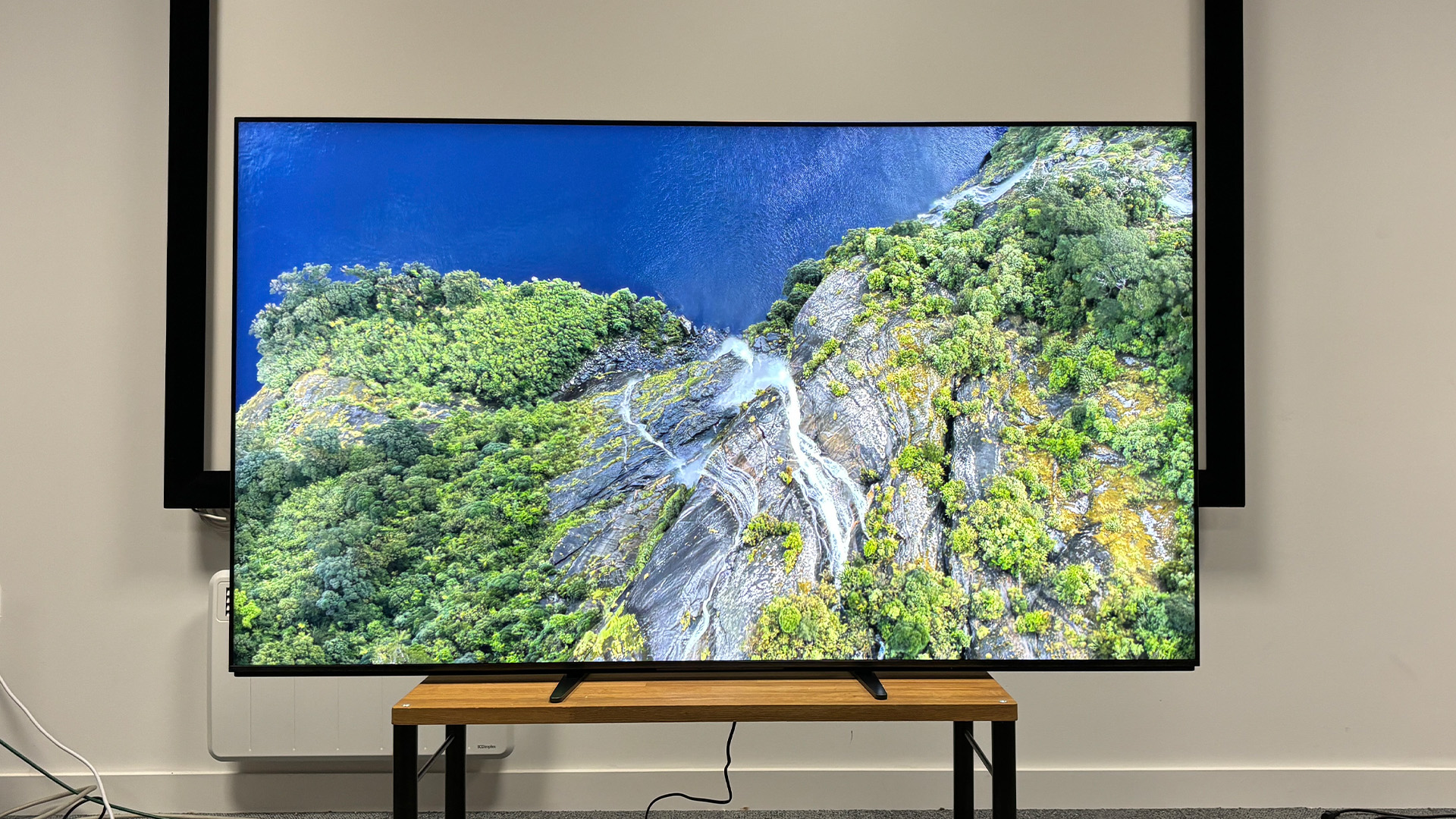
Sony has made some bold claims about the Bravia 9's picture quality, but there are a couple of issues.
Firstly, the local dimming feature has noticeable jumps in brightness that can be distracting. It's only really noticeable with films mastered at a high brightness, and you can avoid it by switching off local dimming, but that makes the picture look flat and lifeless.
Secondly, we found it impossible to get the best out of the Bravia 9. All the picture presets are compromised in some way or other, and even extensive manual tweaking leaves the TV short of where we feel it should be.
These are both software issues, so hopefully Sony can fix them with a firmware update. But they are present nonetheless, and hence worth considering.
But while the TV is a bit fussy, it's also dazzling. Colours are rich and impactful, with detail in even the brightest parts of the picture. Edges are sharply defined, adding a real sense of depth to the image, and while black levels aren't quite OLED deep, they're still very impressive for a backlit TV. There's very little haloing around bright spotlights in dark scenes – as we'll see, the same can't be said of the Samsung QN95D.
Colours are balanced and skin tones natural, though they could be a little warmer. There's no noticeable judder with fast-moving objects either – it's good to see Sony retaining its crown as king of motion control.
And so on to the Samsung QN95D. It gets a lot right. It’s bright, crisp and fairly well-balanced, and noticeably brighter than its QD-OLED cousin, the S95D. The picture is vibrant and punchy, but not unnaturally so, while skin tones look authentic throughout. The colour variation might be a little more subtle in the S95D, but the QN95D is still plenty vivid and engaging, and it shows that Samsung can keep a lid on its oversaturated colours, and that's a big plus.
Overall the picture is sharp and crisp, with no details missed in skin and environmental textures. The level of shadow detail is also impressive, but it's in the dark areas that problems start to emerge. Bright objects in dark scenes have a curious blue halo around them, and while the QN95D is the brighter TV, the S95D has the better contrast thanks to its inky blacks.
** Winner: Sony Bravia 9 **
Sony Bravia 9 vs Samsung QN95D: sound
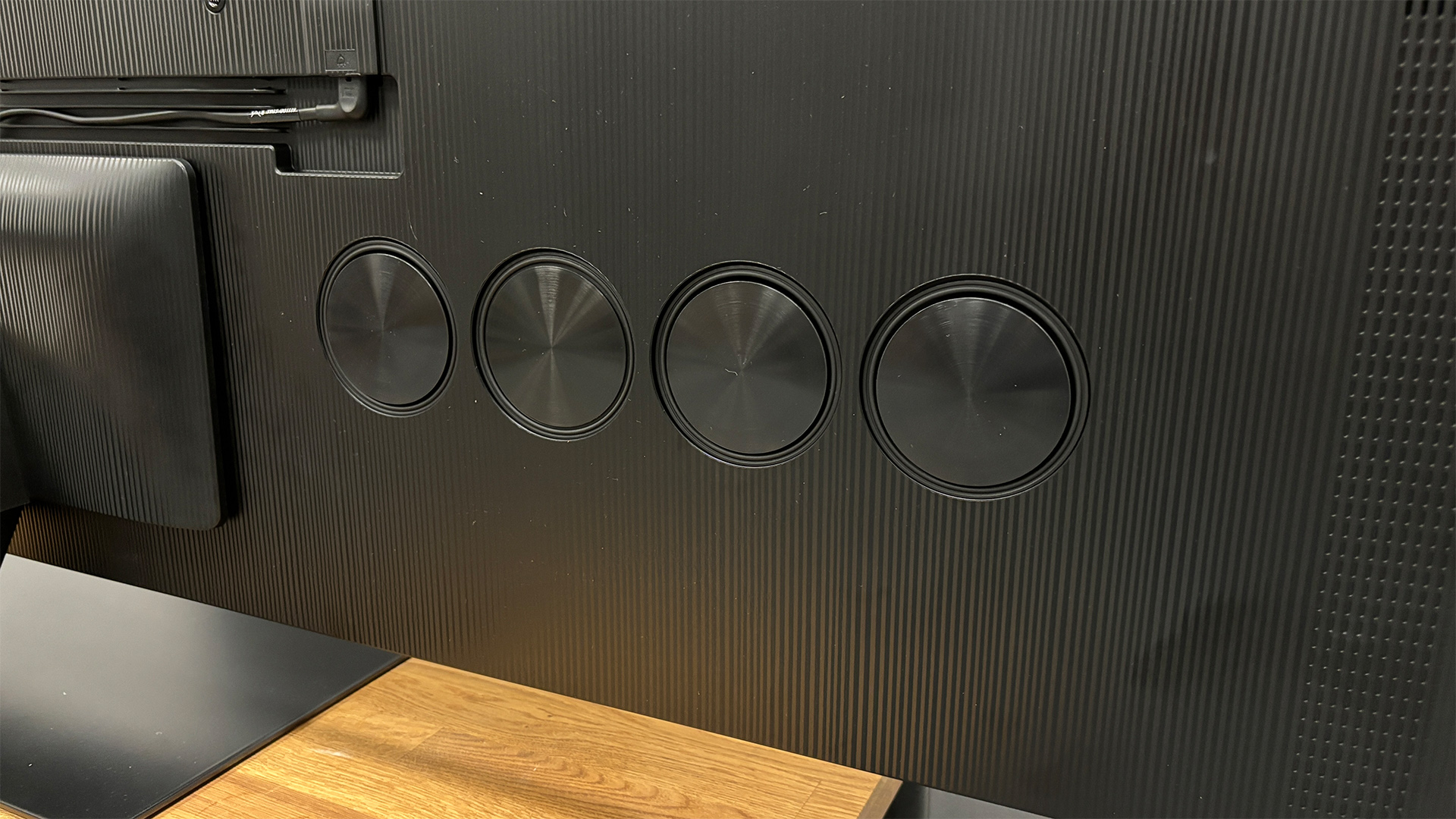
Sony's TVs are some of the better-sounding we've tested, and the Bravia 9 continues that tradition. Its sonic profile is similar to that of the X95L, but the new height speakers add a greater sense of space and the frame tweeters improve the directionality of the sound. Vocal clarity is excellent, and low-level dynamics are impressive. It's loud too, and projects well into the room.
The Voice Zoom 3 dialogue-boosting mode works as advertised, and doesn't sacrifice too much in the way of the other effects.
There's a lack of distortion around the low end, but the flip side to this is a slightly underwhelming bass performance – it could use more weight at that end of the frequency range. But the height channels are a real highlight, making the sound feel more spacious (aided by the room calibration feature on set-up).
The QN95D also lacks some weight in the sound department, but it also lacks a decent level of projection. The dynamics are a little disappointing too, though there is some height to the audio, giving it a sense of space. Speech is clear and easy to understand, though the lack of low-level dynamics does mean you'll miss the odd word or phrase.
As ever, we recommend a Dolby Atmos soundbar or full surround system to get the best audio from either TV.
** Winner: Sony Bravia 9 **
Sony Bravia 9 vs Samsung QN95D: verdict
So there you have it. Two new Mini LED TVs, two four-star performers. We can't pretend we're not slightly disappointed, especially given both companies' track records of producing stellar five-star sets. But while expensive, both TVs have a lot going for them.
The Sony is pricier, not quite as attractive as the Samsung, and a little lacking in the features department. But for our money, it performs better in terms of picture and sound, which are the really important areas for most people. If your budget can stretch, the Sony is the better investment.
** Overall winner: Sony Bravia 9 **
MORE:
Predecessors: read our reviews of the Sony A95L and Samsung S95D
Also consider the LG G4
Best TVs: flagship OLEDs and affordable flatscreens tried and tested
Joe has been writing about tech for 20 years, first on staff at T3 magazine, then in a freelance capacity for Stuff, The Sunday Times Travel Magazine (now defunct), Men's Health, GQ, The Mirror, Trusted Reviews, TechRadar and many more. His specialities include all things mobile, headphones and speakers that he can't justifying spending money on.

